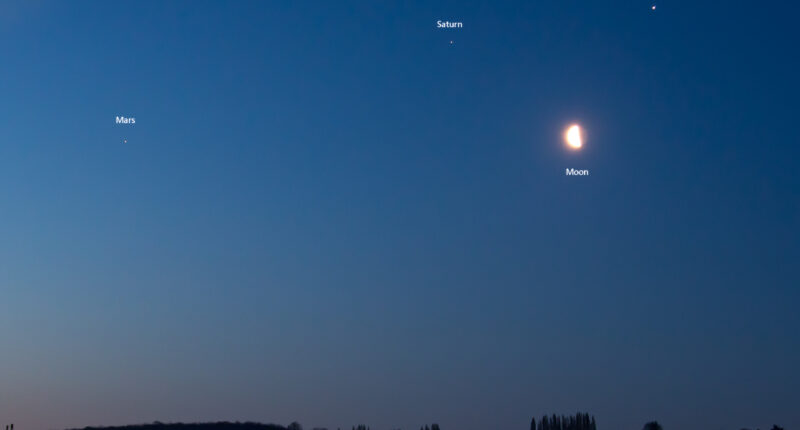STARGAZERS will be treated to a rare celestial parade this bank holiday weekend as FIVE planets line up in the sky.
Mercury, Venus, Mars, Jupiter and Saturn will be visible just before dawn on Saturday.
They’ll appear in an arc across the Eastern sky in order of their distance from the Sun.
The planets – the only five you can see with the naked eye – have not lined up in this fashion since 2004.
To see them, you’ll need an unobstructed view of the horizon to the east and southeast.
The best time to spot them will be on June 3 and 4 roughly half an hour before dawn.


That means around 3:30 a.m. in the U.K. or about 4:40 a.m. in the eastern United States.
Venus will appear brightly not far above the horizon. Tracing an arc to the Southeast will take you to red Mar close to Jupiter.
Saturn will be further south towards the end of the arc, while Mercury will appear faint against the rising Sun.
You might need binoculars to spot the most distant of the planets, as it will be close to the horizon and possibly obscured by sunlight.
Most read in Tech
Planetary alignments don’t happen all that often, particularly when as many as five are involved at once.
That said, Friday’s get together is merely the appetiser to an even more spectacular alignment that’s coming later this month.
On June 24, all of the other planets of the Solar System – Mercury, Venus, Mars, Jupiter, Saturn, Neptune, and Uranus – will join together in the sky.
You’ll need a telescope or binoculars to see the furthest planets, Neptune and Uranus.
And the line will stretch a right across the night sky, making it difficult to photograph.
Alignments of all of the planets (bar Earth) are very rare. This will be only the third time it has happened since 2005.


“We don’t always get this opportunity,” astronomy educator Michelle Nichols from Chicago’s Adler Planetarium told Live Science.
“Sometimes, it’s one or two in the sky; a lot of times, it’s none.”
We pay for your stories! Do you have a story for The Sun Online Tech & Science team? Email us at [email protected]










